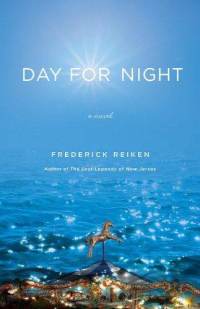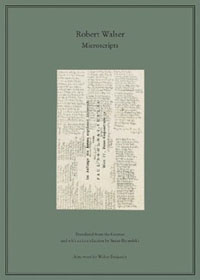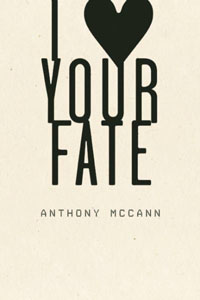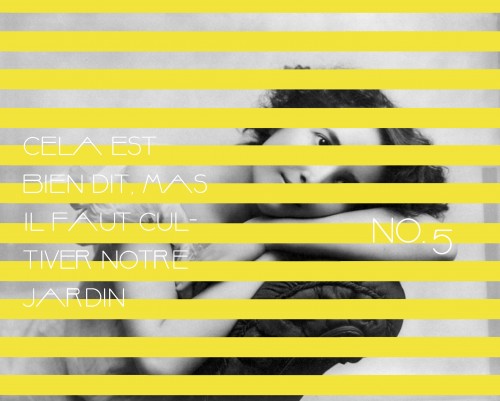Day for Night
 Day for Night
Day for Night
by Frederick Reiken
Reagan Arthur Books, 2010
352 pages / $14.99 Buy from Powell’s
Rating: 7.0
It may be argued that a linked set of stories, or story cycle, presented under the unifying banner of a novel, hews closer to the truth of that nature which art seeks to replicate, than the more traditional novel form could achieve. The set of linked stories paints a broader portrait of its subject, in all the disjointedness of the life its mirrored surface reflects. Or so one would hope, when making the argument. Otherwise, why bother to call it a novel at all? Why not just publish a set of stories as stories, as so many others have done, and allow the reader to discover the connections for himself? Ignoring, or course, the disparity in demand for novels versus story collections.
August 16th, 2011 / 12:06 pm
Copywrite on Writing
“A camera can’t capture the essence.”
“It’s like, when I hear a bassline, I think of blue. When I hear pieces of a nice beat, I think of green, like emeralds and shit. To me, music is like how I look at drawing: it’s just shapes, you’ve just got to put it in the right spots. A picture of Mickey Mouse is just a bunch of circles; you’ve just got to know where to stop the connections at. To me, music and words are just all shapes.”
“I don’t want to be mainstream–I want to piss in it.”
Gordon Lish Explores a New Gimmick
The esteemed author and former editor continues to push the limits and exceed our wildest expectations.
Watch Lish do the Ugly Dance here!
Cynthia Ozick commented, “The surprise of surprises, the grotesqueries of bizarre-ities (and vice versa). A new invention, catapulting into the blackest hole of all, grinning all the way.”
DeLillo, delighted, stated that Lish is “famous for all the wrong reasons.”
I for one can’t wait to see what the old trailblazer will do next.
POOR CLAUDIA 5
Picture Woodland Pattern
 I’ve been interested in Woodland Pattern for years. The bookstore, located in Milwaukee, WI, is so massive, and has been around for so long, that it’s become a vital resource just by virtue of its existence. It’s not too much to call it an anchor of the poetry economy in the USA. Maybe it isn’t selling millions of books, but its role as a stalwart icon can’t be underestimated. Recently Robert Baumann, a WP employee, Milwaukee native, and literature master (and the proprietor of the amazing Mitzvah Chaps), Dropbox’d me a pile of photos from the store and I asked him some questions about them.
I’ve been interested in Woodland Pattern for years. The bookstore, located in Milwaukee, WI, is so massive, and has been around for so long, that it’s become a vital resource just by virtue of its existence. It’s not too much to call it an anchor of the poetry economy in the USA. Maybe it isn’t selling millions of books, but its role as a stalwart icon can’t be underestimated. Recently Robert Baumann, a WP employee, Milwaukee native, and literature master (and the proprietor of the amazing Mitzvah Chaps), Dropbox’d me a pile of photos from the store and I asked him some questions about them.
Thanks for doing this, Robert. I’ve actually wanted to interview someone at Woodland Pattern since I started writing at HTMLGiant. So, first, can you give us some vitals on the store? When was it started? How many employees?
Woodland Pattern–or Woodie P as we lovingly call it–just celebrated its 30th anniversary in 2010; it moved to the location on E. Locust Street in the Riverwest neighborhood in 1979, when founders Karl Gartung and Anne Kingsbury purchased the building. Immediately, they started hosting events: Anne & Karl did a lot to get the “biggies” of “avant garde poetry” here from the get-go. Right now there are six full-time employees, not to mention our amazing board (all volunteers); also, the help of great friends makes a lot of our events possible.
In terms of the bookstore, we’ve got an inventory of ~15,000 books, and the vast majority of those–I’d say over 10,000–are small press and DIY. READ MORE >
Microscripts by Robert Walser
 Microscripts
Microscripts
by Robert Walser
New Directions, 2010
160 pages / $25 Buy from Amazon
At their most definable, Robert Walser’s microscripts are meditations, essays, parables, and sometimes distillations of other authors’ works. Then there are more unclassifiable pieces; these are awkward journal entries, truncated portraits, and non-narrative stillnesses. In Microscripts, twenty-five of these handwritten miniatures appear in facsimile form with their English and German translations. Aside from their physical smallness, what the pieces have in common is a narrating voice that often pays self-conscious attention to its language. For Walser, words are a dangerous delight; they easily get away from him and can even embarrass him. Microscripts offers a tacit commentary on the author’s difficult relationship with language and writing, as well as an extension of his artistic project. READ MORE >
August 15th, 2011 / 12:00 pm
Tao Lin’s next novel, reportedly titled Taipei, Taiwan, has been sold to Vintage. More info at the Observer, “I honestly feel, to a large degree, like me and everyone else are close to death and that the awareness of this has, to me, precluded thoughts of “making it” (this is a theme of the novel).”
Repetition as compulsion: that you could make yourself believe a thing exists by tagging it, by making it again. Only, semantic satiation draws the word away from being, like the thin, drained smell of burnt rubber, rent into an air duct.
 I Heart Your Fate
I Heart Your Fate
by Anthony McCann
Wave Books, 2011
96 pages / $16 Buy from Amazon, Wave Books
A review of I <3 Your Fate, I [heart] Your Fate, or I [love] Your Fate, or, truly, the way your cognition’s filter makes you read it, maybe only when you look at the book, but maybe when you think of it, too, picturing the playful, blackbled type on the cover, I [hate] yr Fate, because the pull of the rhyme is stronger than the sound of the tongue-in-cheek, cardiod stain.
August 12th, 2011 / 12:00 pm
Late Afternoon Links
The Pen American Center has announced the 2011 award winners. I was particularly pleased to see Danielle Evans win the fiction prize for Before You Suffocate Your Own Fool Self.
Stacy May Fowles suggests that one way to address the gender imbalance in literary publishing is for men to stop submitting to those magazines who have serious gender imabalances among their contributors until those magazines rectify the disparity. I disagree with the suggestion because the responsibility belongs to editors, not writers, but her argument is interesting.
At the Texas Observer, Brad Green’s story, “Fixing Miss Fritz,” is worth a read or three.
Glenn Beck has something of a literary career and Laurie Winer offers some insight on that career, such as it may be.
In this interview, Dinty Moore talks about what he looks for in submissions and other things.
Spatial Anomalies in Kubrick’s The Shining
How Stanley Kubrick used Escher-styled spacial awareness & set design anomalies to disorientate viewers of his horror classic The Shining.
[Further maps & thoughts on this film and others here.]



